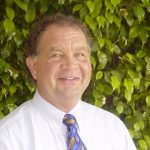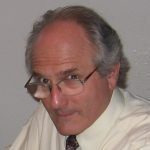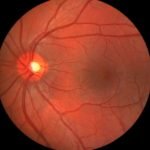The Vital Conversation
JAMES SENSENIG, ND
JARED L. ZEFF, ND, VNMI, LAC
This article joins a series of articles in NDNR that are based on transcripts of the Naturopathic Medicine Institute (NMI)’s Wednesday morning call-in program, The Vital Conversation. The program is hosted by senior Vitalists to enhance the ability of naturopathic physicians to practice as vitalist naturopathic doctors. In this lightly edited transcript (by Emily Kane, ND), the third part of a 3-part conversation, Drs Sensenig and Zeff discuss how to “think like an ND.”
Dr Sensenig: Naturopathic education starts with learning the foundation of our medicine, which is our vitalistic paradigm and all that goes with it, including recognizing when another doctor does not understand the concept of suppression. If you weren’t taught this model, when you see data like a medical doctor does, you have no way of putting the puzzle together. Instead, symptoms are just facts, or the inevitable progression of a disease experience. “When kids have eczema, they next get asthma.”
This point is crucial. If you don’t understand the vitalistic model of health, then you can’t understand what it is we do, and it is not real for you!
An example off the top of my head is a gentleman who came into my clinic this week. He was about 40 years old, and had severe trigeminal neuralgia. He told me that he was first diagnosed 3 years ago and that his facial pain had come and gone since then. He had been mostly free of it for a while, which he attributed to taking a medication for epilepsy. Despite having some mild relief, he continued to have breakthrough episodes. By the time he came in to see me, he was really bad; he had been in severe pain for the 6 weeks or so. The medication was no longer working; he wasn’t getting any relief. He said he was waiting to see a world-famous neurologist who had moved here from California. His previous neurologist would not prescribe for him again or refill his prescription, since it wasn’t working.
So, he came in with that story. I said, “Well, you know, I’m a naturopathic doctor and I don’t prescribe.”
He said, “I know. But you can help me, can’t you?”
I gave him a homeopathic remedy and did some manipulation of his facial bones; some people will recognize this as bilateral nasal specifics or neurocranial restructuring. Having a knowledge of cranial osteopathy and cranial anatomy, I was able to instantly relieve the pressure on the trigeminal ganglion. So he was out of pain, just like that.
The reason I bring that up is not to brag, and not to say that that’s the only treatment for trigeminal neuralgia; it’s just that in this case it worked. My point is, if you don’t know that the bones of the cranium and the face are moveable, then that kind of intervention would never have occurred to you. Indeed, that treatment wouldn’t occur to anybody in the practice of medicine. It might be known to osteopaths or to some chiropractors; but my point is, you can’t solve the problem – you can’t even think about the problem in that way – unless you know what’s possible.
That takes us back to what you were talking about, Dr Zeff. You cannot confidently and competently help somebody whose chief complaint is asthma, or, for that matter, GERD or low-back pain, unless you know what’s possible, not only with the modalities that you’re using, but also how they will fit for that particular patient.
So, we’re back to suppression again. If you don’t understand the concept, and if you don’t have the philosophy, you are probably bound to start leaning on the medical “standard of care,” only because you don’t know that anything else is possible.
Dr Zeff: That’s the point of today’s conversation: How to think like a naturopath. It’s not the same as how to think like a medical doctor.
What many of our graduates now think about is how to suppress the symptoms. They do something that the American Lung Association would approve of, rather than understand what Wendel is talking about in terms of basic naturopathic theory – which is not at all the same as pharmaceutically-based medicine.
Pain? Just Turn Off the Acid
Dr Sensenig: We Vitalists have a fundamentally different worldview. If you’re thinking like a naturopath, you’re not in the same world as a medical doctor. When you look at conventional medicine through the lens of naturopathy, it doesn’t make any sense. It defies logic. In many cases, it defies basic physiology.
Why would you give somebody who is having a digestive problem something to turn off their stomach acid? Talk about different thinking! The worldview of Vitalism is as different from materialism as the “round earth” paradigm is from the “flat earth” paradigm.
Dr Zeff: The assumption in the conventional medical system is that the body is subject to a kind of chaos, that we live in an entropic world where things just go wrong. We are all here kind of by accident, because of some unconscious accidental bumping around of molecules over the last 3 billion years. In the mechanistic model, we feel a need to over-think and figure out how to “fix” some of those intrinsic problems, such as stomach acid.
Proton-pump inhibitors are the second-most commonly prescribed drugs in North America. I guess the assumption is, “You don’t really need stomach acid, so let’s just turn it off, and then you’ll stop hurting.” The thinking doesn’t seem to go any further. However, what happens when you don’t have stomach acid? Obviously, you don’t digest proteins; you don’t extract minerals from your food; you don’t stimulate the pancreas and liver to excrete pancreatic substances and cholecystokinin, etc. Blocking stomach acid turns off the key that stimulates the whole downhill digestive process that allows for mineral absorption and amino acid bioavailability. Nutrient absorption is a fundamental pillar of health. It has been called “building the blood.”
So, if you take an antacid, you don’t digest well. And when you don’t digest well, you can’t be healthy. That’s how a naturopathic doctor thinks. But that’s not how a medical doctor thinks. The conventional medical model seems to think it’s wonderful that they have found this nifty tool that turns off stomach acid so that gastric or esophageal pain can stop.
The vitalistic naturopathic doctor digs even deeper, and asks, “What caused the pain in the first place?” We learn in first-year anatomy and physiology that the lower esophageal sphincter tightens to hold down the stomach acid – the more acidic the stomach, the tighter the sphincter. If you’re having a problem with lower esophageal sphincter tone, thereby creating GERD because of a loose valve, the problem isn’t that there’s too much acid; it’s that the sphincter isn’t working well. Too much acid is hardly ever the problem, especially as we age. Usually, there’s not enough stomach acid for optimal digestion.
Even in a conventional context, omeprazole and other proton-pump inhibitors are only supposed to be used for 2 or 3 weeks. I have patients who’ve been on them for years.
Dr Sensenig: Decades!
Dr Zeff: And they’re suffering from the consequences of not digesting well.
Dr Sensenig: And losing their minerals, getting osteoporosis, experiencing poor wound healing, etc. Stomach acid is not the problem. Like you said, it’s usually a lack of stomach acid that creates digestive problems.
What the MDs are doing defies basic physiology. It’s crazy. If a small profession like ours did something as stupid as that, we’d be sitting in court somewhere. How does something so wrong become a standard of care?
Dr Zeff: And why are naturopathic students and doctors and the schools falling for that nonsense?
Dr Sensenig: By definition, allopathic medicine means working against Nature. Most everything they use is classified as an anti-something: antibiotic, antiemetic, anodyne, antiphlogistic, anti..anti…anti! The drugs are designed to work against the symptom and turn it off, the same way you’d turn off a light switch. It’s all in the service of squashing, suppressing, or eliminating the symptom, often at the expense of the patient’s health.
The Endogenous Band-Aid Factory
Dr Zeff: Let’s talk about the most popularly prescribed class of drugs in North America – statins. In the first place, if you follow the incidence of death from heart attacks and heart disease, and you note the point in time at which statins were introduced, you do not see a drop in the incidence of heart attacks. You do see a drop in mortality rates as you factor in the development of the Cardiac Care Units in hospitals, but not with the introduction of statin drugs.
Statins very effectively turn off cholesterol production in the liver. Of course, they also turn off the production of coenzyme Q10, a critical enzyme in cellular energy production. The 60-year-old theory, which we now know is false, says that cholesterol elevations cause arterial disease. This theory has been soundly disproven.
However, here we have this drug that does an excellent job at reducing cholesterol levels. In fact, when Merck discovered the drug and started marketing it, one of their goals was to make sure everybody in the country knew their cholesterol level. That became a big deal. And cholesterol continues to be obsessively checked on most blood tests.
If you go to a conventional doctor and your cholesterol is over 200, the doctor says, “It’s too high. We need to get it down, so you don’t have a heart attack. Here, take this drug.” And the patient comes back a month later with a new blood test and, sure enough, the cholesterol level is cut in half. The doctor is happy, and the patient is happy, and the “proof” is right there on paper.
What did they just do? They turned off the endogenous Band-Aid factory. All bodies need cholesterol. The brain is 25% cholesterol by dry weight. Every cell in the body needs cholesterol to function properly. We know that. Cholesterol elevations typically occur because there is an inflammatory process in the body and the cholesterol is being used in part to try to repair the problem that created the inflammation.
So, we see elevated cholesterol and we take a drug. But cholesterol is like a liquid Band-Aid that the body makes as a potent repair agent. Rather than look at what’s causing the inflammation, conventional doctors want to turn off the Band-Aid factory. To me, that’s insane.
Evidence Based in What?
Dr Sensenig: Right! What’s even more insane is that, like you said, this is a 60-year-old theory known to be false. The people promulgating the theory know it to be false. Pharmaceutically driven medical doctors have a so-called “standard of care” that is based on bad information.
That brings us to the issue that our students are being taught to believe that there is such a thing as evidence-based medicine, that, somehow, a standard of care is based on evidence. It might be based on the evidence that statins decrease the total cholesterol levels, which, of course, is true; however, the rationale for lowering cholesterol levels is specious, because that causes well-documented harm, such as increasing risks for cancer, diabetes, and cognitive degeneration.
How is it that a profession that prides itself on being scientific and cutting edge is so far behind the times? And why is that not criminal? We all know what you just said. But the cardiologists of America don’t know this yet, and yet we’re supposed to emulate them? When you understand the potential of naturopathic medicine, why would you resort to a so-called “standard” based on drugs?
Dr Zeff: Drugs generate billions of dollars a year. The conventional medical mindset is, “Let’s just look at how well they work. But let’s not look at what they do long-term or why they’re being prescribed.”
Dr Sensenig: That’s the real standard: How much money does it generate?
Dr Zeff: That’s a big piece of it, unfortunately. If they were going solely on “What does the evidence show?” they would change their thinking. You can see that the evidence shows that statins don’t fundamentally reduce heart attacks and strokes; maybe they do in a small group of people, but not in general. So why are we using them? The line from the conventional medical mindset goes something like this: “Well, they sure work well, and we can show it on paper, and let’s just forget about this science that tells us that it’s not doing what we think it’s doing, because it sure does lower cholesterol well.” And we all know cholesterol is bad because we hear that all the time on TV.
Dr Sensenig: We could talk about this forever. How often do we have to field the patient asking, “How do I lower my cholesterol?” To which I’ll reply, “Why do you think that your cholesterol level is a problem?” How could any rational physician believe that 200 is a magic number that applies to everyone’s cardiovascular health?
Dr Zeff: The question is, “Why is it elevated? What tissue or organ is needing repair?”
Dr Sensenig: When we were in school, the accepted laboratory values for cholesterol were up to 300 mg/dL.
Dr Zeff: The older you get, the higher they should be.
Dr Sensenig: Right. As times changed and we got out of school, the acceptable high normal was 285. Then I distinctly remember it being brought down to 250; then it went down to 235 for a while. And suddenly it went down to 200! That is the acceptable range according to the conventional system. It dropped to 200 after the statins were introduced. Before that, that was not the generally acknowledged acceptable range.
Dr Zeff: Jon Abramson, MD, wrote a book called Overdosed in America, which has several chapters on anti-cholesterol marketing. He talks about a committee with ties to the drug industry, which was formed to reevaluate cholesterol standards. Five of the people on that committee had their salaries paid in part by Merck Pharmaceuticals; and they came up with a new value, which at first was 230. Then it went down to 200. On what basis did they change the supposed ideal level of total cholesterol? “Well, it’s just a good idea,” the committee concluded.
Where is the science behind that recommendation? It’s non-existent; it’s just a good idea. Oh, and by the way, Merck’s gonna make a lot more money now!
I would say, “If you want to practice like a medical doctor, go to medical school!” Don’t go to a naturopathic school, and certainly don’t try to change naturopathy into conventional medicine. Naturopathic medicine is a separate and distinct branch of the healing arts.
Dr Sensenig: A very good point to close up today’s talk.
This column, based on the Vital Conversations of the Naturopathic Medicine Institute, will continue in next month’s NDNR.

James Sensenig, ND, was a 1978 graduate of NCNM in Portland, OR. For over 40 years he maintained an eclectic practice in Hamden, CT. Over the years, Dr Sensenig held prominent positions in the various naturopathic colleges and the AANP. A champion of classical naturopathic medicine, Dr Sensenig received an Honorary Doctor of Naturopathic Philosophy degree from CCNM, and received numerous awards for his dedication to teaching the principles of naturopathic medicine. We invite you to participate in the Naturopathic Medical Institute (NMI) Vital Conversations, our annual Vital Gathering conferences, and many other resources found at our website: www.naturopathicmedicineinstitute.org.

Jared L. Zeff, ND, VNMI, LAc, is a licensed doctor of naturopathic medicine and a licensed acupuncturist. In addition to functioning as Medical Director at the Salmon Creek Naturopathic Clinic in Vancouver, WA, Dr Zeff teaches on the faculty at National University of Natural Medicine in Portland, OR, where he was also Dean from 1988 to 1993, and holds a professorship in Naturopathic Medicine. Dr Zeff is a graduate of the University of California, NCNM, and the Emperor’s College of Traditional Oriental Medicine. He, along with Pamela Snider, is the author of the AANP’s Definition of Naturopathic Medicine, and the Therapeutic Order concept.





